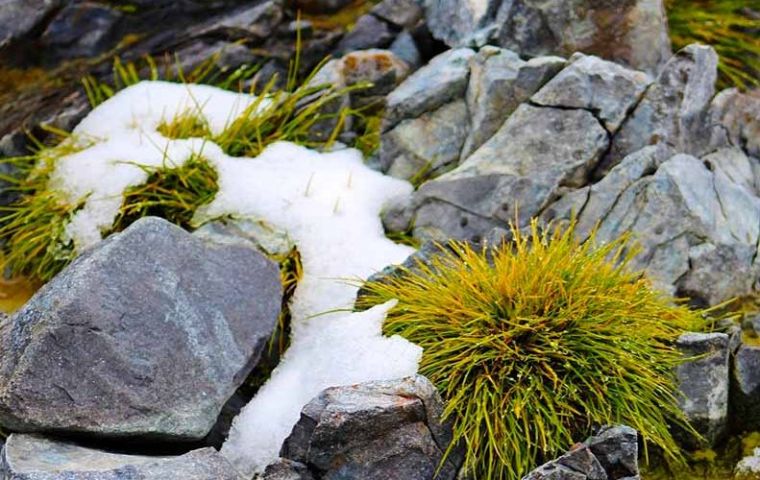MercoPress. South Atlantic News Agency
Plant dynamics in Antarctica because of climate change
 Nicoletta Cannone measured the growth of Antarctic’s only two native flowering plants, Deschampsia Antarctica and Colobanthus quitensis, on Signy Island
Nicoletta Cannone measured the growth of Antarctic’s only two native flowering plants, Deschampsia Antarctica and Colobanthus quitensis, on Signy Island Rising temperatures in Antarctica have seen two species of plants grow quicker, in a ten year period, because of climate change, according to an article published in Current Biology under the heading of “Acceleration of climate warming and plant dynamics in Antarctica”
Scientists have already observed increased plant growth due to climate warming in the northern hemisphere, but this is the first recorded change in the southern Antarctic.
Nicoletta Cannone an ecologist at the University of Insubria, Italy, and her colleagues measured the growth of Antarctic’s only two native flowering plants, Deschampsia Antarctica, also known as hair grass and Colobanthus quitensis, pearlwort, at a number of sites on Signy Island from 2009 to 2019.
The researchers then compared their observations with surveys from the previous 50 years and found that not only had the sites become more densely populated by the plants, but they had grown faster each year as the climate warmed.
The Deschampsia grew as much in the ten-year period as it had in the 50 years from 1960 to 2009, and the Colobanthus had grown five times more over the same periods.
Cannone explained that these plants withstand the continent's frigid temperature and photosynthesize at temperatures below zero while covered in snow.
“The most novel feature of this is not the idea that something is growing faster,” said team member Peter Convey at the British Antarctic Survey, but rather that the growth seems to be accelerating. “It’s that we think we’re starting to see what is almost like a step change or a tipping point.”
Though other factors may have positively affected plant growth, such as a declining fur seal population, the link with a warming climate is clear, says Cannone. The increase in temperature could also allow invasive species to colonize and outgrow the native plants, an effect that has already been observed in Alpine regions, which could destabilize local ecosystems and biodiversity.
“If we extrapolate what we observed on Signy Island to other sites in Antarctica, a similar process can also occur,” says Cannone. “This means that the Antarctic landscape and biodiversity could change rapidly.”
“Antarctica is acting as a canary in a coal mine, on climate and biodiversity change” Ms Cannone pointed out.




Top Comments
Disclaimer & comment rules-

Read all commentsIs there a problem?
Mar 27th, 2022 - 06:24 am 0Commenting for this story is now closed.
If you have a Facebook account, become a fan and comment on our Facebook Page!